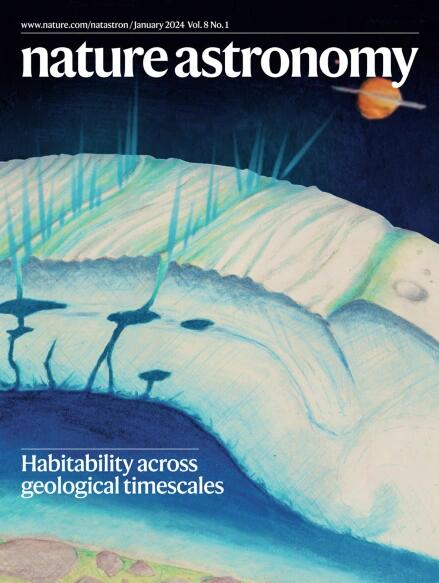利用磁悬浮力传感器约束对称暗能量
IF 12.9
1区 物理与天体物理
Q1 ASTRONOMY & ASTROPHYSICS
引用次数: 0
摘要
对称模型是最引人注目的暗能量理论之一,它已经在一个基于磁悬浮力传感器的实验室实验中得到了验证。虽然在实验中没有发现暗能量的证据,但对称参数空间的约束已经收紧了6个数量级以上。本文章由计算机程序翻译,如有差异,请以英文原文为准。

Symmetron dark energy constrained using a magnetically levitated force sensor
The symmetron model is one of the most compelling theories of dark energy and it has been tested in a laboratory experiment based on a magnetically levitated force sensor. Although no evidence of dark energy has been found in the experiment, the constraints on the symmetron parameter space have been tightened by more than six orders of magnitude.
求助全文
通过发布文献求助,成功后即可免费获取论文全文。
去求助
来源期刊

Nature Astronomy
Physics and Astronomy-Astronomy and Astrophysics
CiteScore
19.50
自引率
2.80%
发文量
252
期刊介绍:
Nature Astronomy, the oldest science, has played a significant role in the history of Nature. Throughout the years, pioneering discoveries such as the first quasar, exoplanet, and understanding of spiral nebulae have been reported in the journal. With the introduction of Nature Astronomy, the field now receives expanded coverage, welcoming research in astronomy, astrophysics, and planetary science. The primary objective is to encourage closer collaboration among researchers in these related areas.
Similar to other journals under the Nature brand, Nature Astronomy boasts a devoted team of professional editors, ensuring fairness and rigorous peer-review processes. The journal maintains high standards in copy-editing and production, ensuring timely publication and editorial independence.
In addition to original research, Nature Astronomy publishes a wide range of content, including Comments, Reviews, News and Views, Features, and Correspondence. This diverse collection covers various disciplines within astronomy and includes contributions from a diverse range of voices.
 求助内容:
求助内容: 应助结果提醒方式:
应助结果提醒方式:


